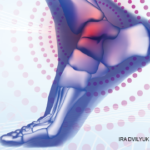Serious strides have been made for another group of individuals who have lost their ability to walk, not because of joint disease or other effects of aging on the skeleton. These are the soldiers and civilians who have had their feet and legs ripped from their bodies by explosive devices. Although most of these victims have come from war zones, where buried land mines and roadside improvised explosive devices (IEDs) are rampant, we recently witnessed the chaos and madness of IEDs planted in the heart of downtown Boston at the 2013 Marathon finish line.5 It has been incredibly heartening to see how several of the victims of this blast have already regained their ability to walk, run or dance.
In separate ways, nature and science have made striking advances to advance human locomotion. In the process, our brains have grown in size, but has that made us smarter? If so, then it shouldn’t be too difficult for humanity to figure out how to stop killing and maiming one another. We don’t have a millennium to waste.
Simon M. Helfgott, MD, is associate professor of medicine in the division of rheumatology, immunology and allergy at Harvard Medical School in Boston.
References
- Laiho K, Kauppi M, Konttinen YT. Why Atlas, why not Heracles: Reflections on the rheumatoid cervical spine. Semin Arthritis Rheum. 2005 Feb;34(4):637–641.
- Darwin C. The Descent of Man, and Selection in Relation to Sex. John Murray. London, England. 1871.
- Lieberman D. E. (2010) Four legs good, two legs fortuitous: Brains, brawn and the evolution of human bipedalism. In the Light of Evolution. Ed. Jonathan B. Losos. pp. 55–71. Greenwood Village, Colo: Roberts and Company. 2011.
- DeSilva JM, Holt KG, Churchill SE, et al. The lower limb and mechanics of walking in Australopithecus sediba. Science. 2013 Apr 12;340(6129):163–165.
- Guermazi A, Hayashi D, Smith SE, et al. Imaging of blast injuries to the lower extremities sustained in the Boston marathon bombing. Arthritis Care Res. 2013 Dec;65(12):1893–1898.
Corrections
In “Diagnosing Axial Spondyloarthritis” by Atul Deodhar, MD (The Rheumatologist, May 2014), the source for Figure 1 was inadvertently omitted. The credit should have read: Adapted from van Vollenhoven RF. Nat Rev Rheumatol. 2011 Apr;7(4):205–215. We regret the omission.
The article “JAK Inhibition in RA” (The Rheumatologist, July 2014) inaccurately reports that tofacitinib was approved by the FDA in November 2012 for use in psoriasis, stating: “Tofacitinib was approved by the FDA in November 2012 for use in psoriasis and in RA for patients who have had an inadequate response or intolerance to other therapies.”
